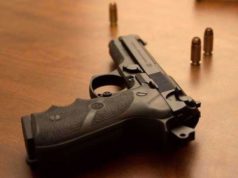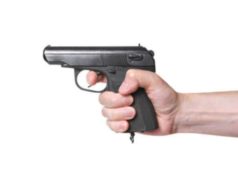
OHIO GUN LAWS & REGULATIONS UPDATE 2023
A DECADE OF CHANGE: AN UPDATED OVERVIEW OF OHIO’S GUN LAWS AND REGULATIONS TIMELINE (2013-2023)
Over the past ten years, Ohio’s gun laws have experienced notable changes, reflecting the state’s commitment to balancing Second Amendment rights and public safety considerations. From concealed carry to background checks, these developments highlight Ohio’s efforts to address evolving perspectives on firearm ownership. This article provides an overview of the key updates in Ohio’s gun laws and regulations from 2013 to 2023, presented in bullet points:
2013 – Expanded Concealed Carry Locations:
– Legislation allowing concealed carry permit holders to carry firearms in more locations, including daycares and private aircraft.
2014 – Enhanced Background Checks for Concealed Carry:
– Strengthened background checks for concealed carry permit applicants, emphasizing mental health and criminal history evaluations.
2015 – Stricter Reporting of Mental Health Records:
– Improved reporting of mental health records to the National Instant Criminal Background Check System (NICS).
– Aims to prevent firearm access by individuals with mental health concerns.
2016 – Concealed Carry Reciprocity Agreements:
– Expansion of concealed carry reciprocity agreements with other states, allowing permit holders to carry across state lines.
2017 – Enhanced Penalties for Gun Crimes:
– Introduction of legislation enforcing stricter penalties for individuals convicted of gun-related crimes.
– Aims to deter illegal firearm use and promote public safety.
2018 – Bump Stock Ban:
– Enactment of laws banning bump stocks, devices that can increase a semi-automatic firearm’s rate of fire.
2019 – “Stand Your Ground” Law Consideration:
– Discussion about the potential adoption of a “stand your ground” law, allowing individuals to use deadly force in self-defense without retreating.
2020 – Background Checks for All Gun Sales Proposed:
– Exploration of legislation to require background checks for all firearm sales, including private transactions.
2021 – Firearm Storage Guidelines Consideration:
– Exploration of guidelines promoting responsible firearm storage practices to prevent unauthorized access.
2022 – Enhanced Mental Health and Firearm Access Evaluation:
– Exploration of ways to improve the reporting and evaluation of mental health records in relation to firearm background checks.
2022 – “Red Flag” Law Discussion:
– Discussion around the potential implementation of “red flag” laws, allowing law enforcement to seek temporary firearm removal for individuals posing risks.
2023 – Firearm Training and Safety Initiatives:
– Introduction of initiatives promoting firearm safety education and training among gun owners.
– Emphasis on responsible practices and handling.
2023 – Firearm Waiting Period Consideration:
– Discussion about implementing a mandatory waiting period for firearm purchases to allow for comprehensive background checks.
2023 – Enhanced Oversight of Firearms Sales:
– Exploration of measures to enhance the oversight and regulation of firearm sales.
Ohio’s gun laws have evolved over the past decade, reflecting the state’s commitment to responsible firearm ownership and community safety. These changes demonstrate Ohio’s proactive approach to firearm regulation. As the state continues to adapt its laws, it remains essential for stakeholders, policymakers, and the public to engage in informed discussions that prioritize individual rights while maintaining community security.
Generally considered a swing state during election time, Ohio’s stance on gun control can be placed under a more absolute context. Although the state has some regulations towards gun laws, it’s considered to have a very lenient sentiment towards the distribution and purchasing rights for firearms. Like all state’s with meager gun laws, Ohio’s basic chart is as such:
State Requirements:
Rifles and Shotguns:
No Permit needed for purchasing rifles and shotguns
No Registration of rifles and shotguns
No Licensing of owners of rifles and shotguns
No Permit to carry rifles and shotguns
Handguns:
No Permit needed for buying a gun
No Registration of handguns
No Licensing of owners of handguns
A Permit is required to carry handguns if concealed
Application for a permit to carry a concealed handgun is made at the local sheriff’s office through the Ohio Peace Officers Training Commission. Buying a gun comes without regulation, and the application process to conceal is not too scrupulous either. The applicant’s basic requirements to begin the process are as such: Must be at least 21 years old, a resident of Ohio for 45 days, a resident of the issuing county, include a set of fingerprints, and a certification of competency with a firearm.
The state will block all applicants who have a criminal background, drug addiction, or series of misdemeanors committed over the last three years. Buying a gun in Ohio is not a difficult task. There are no background checks performed at Ohio gun shows, a permit or license is not necessary, and there are no limits on purchases. There is a permit necessary to conceal a handgun, but the process is fairly basic and does not require extensive waiting periods or background checks.
The most detrimental issue facing the state’s gun laws, revolves around the lack of enforcement placed on distributors and sellers of firearms. Based on government research, Ohio has the ninth highest percentage of crime guns recovered that were originally purchased within the state. “Since Ohio does not require criminal background checks on all firearm sales, including those at gun shows, gun traffickers don’t need to leave the state to funnel illegal guns to felons and gang members,” said Toby Hoover, Executive Director of the Ohio Coalition Against Gun Violence.
Buying a gun at a Ohio gun show is the most prevalent form of gun transaction in the state. Distributors at Ohio gun shows face little regulation-no state license is required to sell, there is no mandatory record keeping, there is no communication with the state, and police inspections are not allowed. Due to this laxity, and failure to require records of sales or ballistic reports, Ohio gun shows are a fundamental problem in the distribution of criminal firearms.
In 2007, Ohio gun shows were under a firestorm of national security for repeated displays of negligence and incompetence. Distributors throughout the state repeatedly sold guns to individuals without performing mandatory federal background checks. Even individuals who made it known that they had no chance of buying a gun based on their criminal past were given numerous opportunities to buy.
Ohio gun shows have been known to take advantage of the so-called “gun show loophole” which allows for individuals to privately sell their “personal collections” of firearms without a license. To further exacerbate this problem, Ohio gun shows are so prevalent that the flooding of illegal transactions seems impossible to control.
The issue of firearm sales at Ohio gun shows has been fervidly debated. In addition to upholding the Constitution, firearms supporters have made the argument that less than 1% of all criminal guns were purchased at gun shows. Much of the controversy centering around Ohio gun shows can be attributed to the market’s cavalier nature; it is difficult to ascertain statistics and formulate appropriate legislation considering the markets at Ohio guns shows are fragmented and unregulated.























